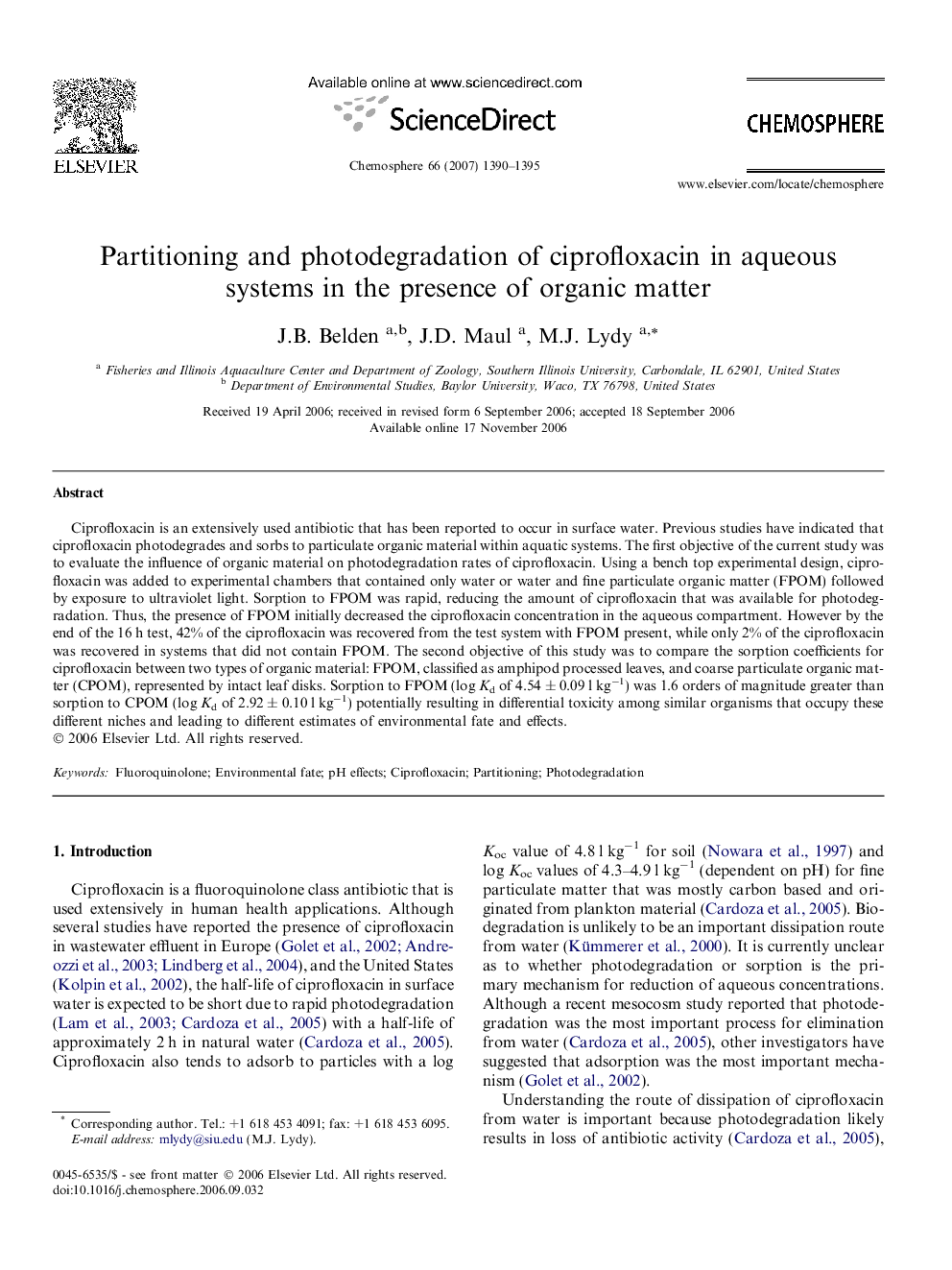| Article ID | Journal | Published Year | Pages | File Type |
|---|---|---|---|---|
| 4415176 | Chemosphere | 2007 | 6 Pages |
Ciprofloxacin is an extensively used antibiotic that has been reported to occur in surface water. Previous studies have indicated that ciprofloxacin photodegrades and sorbs to particulate organic material within aquatic systems. The first objective of the current study was to evaluate the influence of organic material on photodegradation rates of ciprofloxacin. Using a bench top experimental design, ciprofloxacin was added to experimental chambers that contained only water or water and fine particulate organic matter (FPOM) followed by exposure to ultraviolet light. Sorption to FPOM was rapid, reducing the amount of ciprofloxacin that was available for photodegradation. Thus, the presence of FPOM initially decreased the ciprofloxacin concentration in the aqueous compartment. However by the end of the 16 h test, 42% of the ciprofloxacin was recovered from the test system with FPOM present, while only 2% of the ciprofloxacin was recovered in systems that did not contain FPOM. The second objective of this study was to compare the sorption coefficients for ciprofloxacin between two types of organic material: FPOM, classified as amphipod processed leaves, and coarse particulate organic matter (CPOM), represented by intact leaf disks. Sorption to FPOM (log Kd of 4.54 ± 0.09 l kg−1) was 1.6 orders of magnitude greater than sorption to CPOM (log Kd of 2.92 ± 0.10 l kg−1) potentially resulting in differential toxicity among similar organisms that occupy these different niches and leading to different estimates of environmental fate and effects.
